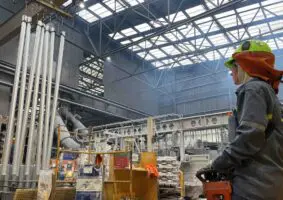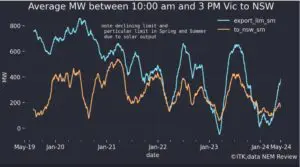Victorian Energy Efficiency Certificates (VEECs)

For those with insufficient patience, the wait across September for the release of the anticipated changes to the commercial lighting methodology was tough. For prices in the VEEC market, the month was overwhelmingly positive.
Having opened in the mid $14s, the spot VEEC market was generally stable across the first half of September, only surpassing the $15 mark for the first time mid month. The second half of September, however, was a far more bullish affair, with the spot rallying through the $19 mark to levels not seen since May 2016 as speculation was eventually replaced with the release of a firm proposal for changes to Schedule 34.
The proposal was generally in line with much of the speculation that had preceded it, with a discount factor of either 20 or 30% to be ultimately applied depending on the type of lighting upgrade being undertaken. There were a couple of differences however.
In attempting to balance the need for prompt changes that would bring down the persistently strong rates of VEEC creation against the risk of creating upheaval amongst businesses operating under the scheme by changing the goal posts too quickly, the proposal outlines a 2 stage transition process in which T5 and T8 replacements will see a discount factor of 10% introduced for activities undertaken from 1 Jan 18, moving to 20% on 1 Apr 18.
For metal halides, mercury vapour and high pressure sodium replacements the discount factor is greater, at 15% from 1 Jan 18 and 30% from 1 Apr 18.
There had been plenty of speculation that the discount factors were going to have applied uniformly to all lighting types under schedule 34, yet this was not what ultimately eventuated. Stakeholders now have until 1 Nov 17 to respond to the proposal.
By month’s end the rally has seemed to have run its course with the forward market across 2018 having reached highs just under $20 before softening back to the low to mid $19s.
With the VEEC market having rallied over 50% off its lows, the questions now being asked are whether the technologies affected by the change will once again be viable under a giveaway model at the new, higher levels and for how long will opportunities remain?
As well, as what sort of resurgence will the recovery encourage in other areas such as the residential lighting sector in which activity had dwindled at lower prices?
Weekly VEEC submissions averaged 138k across September, thus adding over 20k per week to the surplus. At the time of writing there were 9.3m VEECs either registered or pending registration, meaning that after the 5.9m 2017 target is met there are already 3.4m of the 6.1m needing to be surrendered in 2018. In the short term, it appears submissions will likely remain strong as creators do what they can to get their installs done before the rules change.
New South Wales Energy Savings Certificates (ESCs)

The Bull Run continued in the ESC market across September despite an increase in registrations across the month as participants continued to consider concerns about future supply above the market’s current position.
The spot ESC market began the month by softening into the low $17s before once again embarking on a sustained rally across the remainder of the month, though liquidity ultimately deprived the spot market of activity in the second half of the month. Having reached the low $18s in the third week of September the spot market did not record a further trade, despite the forward market continuing to rally.
Indeed it was in the forward market that – despite also experiencing patchy liquidity at times –the vast majority of the trade activity occurred across September, with trades for delivery in late 2017 and across all of 2018 taking place.
The market ultimately ended the month with a trade for Feb18 at $21.20, which implied a spot price of around the $21.00 mark.
To explain the rally, it seems, one needs to take a longer term view in the ESC market because the situation in the short to medium term does not appear to justify such an incredible recovery in prices. For starters, by late September there were 5.6m ESCs live and available to meet the 2017 target of circa 4m certificates, with registrations for 2017 eligible ESCs likely to continue in earnest for at least another 6 months.
Then there is the fact that the proposed changes to the commercial lighting methodology are currently only slated to take effect one year from now, leaving a very substantial amount of time for the market to continue business as usual.
It is true that in the last few months ESC registration figures have been well down on what was experienced across the first 6 month of 2017 and it is not yet clear whether the current situation is an aberration or the new normal; something which will impact on prices in the short term.
But it is also likely that with the threat of major reductions in the number of ESCs that will be created from some building categories (i.e. everything other than industrial) will likely spur activity in those areas given then the customer will be materially worse off after the changes take effect.
Marco Stella is Senior Broker, Environmental Markets at TFS Green Australia. The TFS Green Australia team provides project and transactional environmental market brokerage and data services, across all domestic and international renewable energy, energy efficiency and carbon markets.












